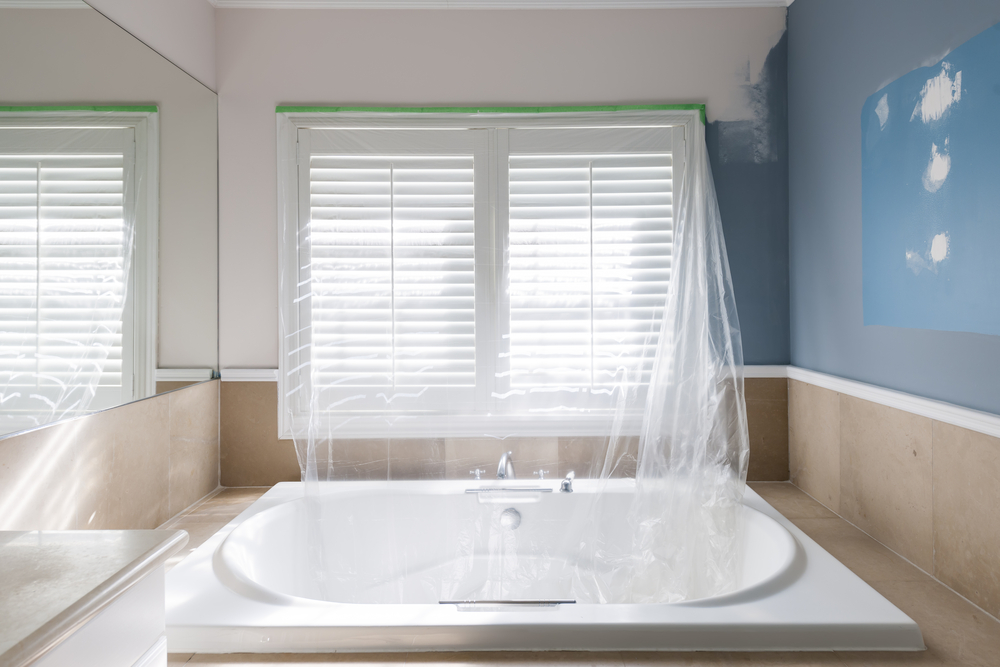Painting a bathroom is one of the easiest and cost effective ways to update a dull bathroom. But there are some pitfalls to be aware of before you start rolling some paint on the walls.
Avoid these five first-timer fails to ensure a flawless finish on your bathroom walls.

1. Don’t paint over mould or mildew
Preparation is key for any wall that needs painting, especially the bathroom.
Bathroom walls are notorious for having surface mould and mildew due to the humid environment. Never paint over this mould or mildew as it will come back to haunt your new paint job.
Instead, clean the mould and mildew with a cleaner and allow adequate time to dry.
Condensation is also a common problem in a bathroom which doesn’t have a lot of ventilation.
In Perth, humidity is not a concern, but moisture and lack of air movement in a bathroom can cause it to be a moist breeding ground for your walls.
Prepare the walls in your bathroom by giving them a thorough clean and ensure the wall surface is dry before painting.
To prevent future mould and mildew on your freshly painted walls, ensure there is sufficient ventilation.
2. Choose the right wall paint
Unfortunately, you can’t choose just any paint for your bathroom walls.
Satin or semi-gloss paints are best suited for the bathroom as it makes the walls easier to clean.
Ensure your bathroom paint has moisture and mould resistance properties to protect your walls and prevent the surface from harbouring any unwanted nasties.
3. Remove taps and fixtures
To protect taps and fixtures, remove them altogether. Taping around the toilet cistern and tap flanges can be cost effective, but paint droplets or an accidental brush can’t be prevented.
Painting behind the fixtures also ensures an even finish so you won’t know where the paint roller started or ended around the fixture.
4. Use the same paint on walls and ceiling
Most bathrooms are painted white to brighten and refresh. If this is the case for your bathroom, use the same paint on the walls and ceiling. Don’t choose a different ceiling paint, unless you’ve chosen a tinted wall paint.
Choosing to paint your walls white will ensure the ceiling can be painted the same colour, too. It lessens the time needed to prep and tape between ceiling and walls.
Using the same paint on the walls and ceiling can make your bathroom look bigger, too.
5. Don’t reapply paint to wet walls
Ensure the correct amount of time is allowed for the walls to dry between coats and when the bathroom is in use. It’s best to use an alternate bathroom to shower in to ensure adequate drying time for the bathroom walls. Reapplying paint to wet walls is going to create an uneven finish.
If your bathroom needs painting and you’re pressed for time, or concerned about getting a flawless finish, why not outsource the job to the professionals?
